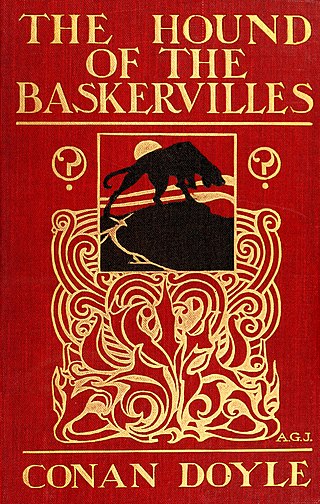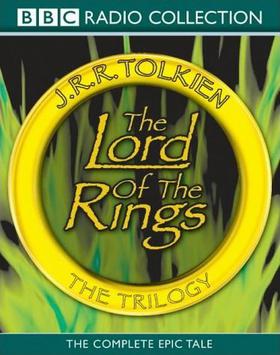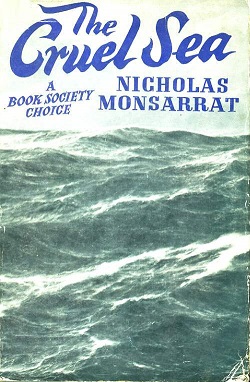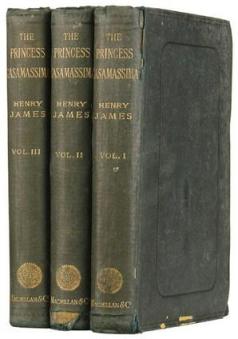
Franz Kafka was a German-speaking Bohemian Jewish novelist and writer from Prague. He is widely regarded as one of the major figures of 20th-century literature. His work fuses elements of realism and the fantastic. It typically features isolated protagonists facing bizarre or surrealistic predicaments and incomprehensible socio-bureaucratic powers. It has been interpreted as exploring themes of alienation, existential anxiety, guilt, and absurdity. His best known works include the novella The Metamorphosis and novels The Trial and The Castle. The term Kafkaesque has entered English to describe absurd situations like those depicted in his writing.

Gilbert Keith Chesterton was an English writer, philosopher, Christian apologist, and literary and art critic.

The Hound of the Baskervilles is the third of the four crime novels by British writer Arthur Conan Doyle featuring the detective Sherlock Holmes. Originally serialised in The Strand Magazine from August 1901 to April 1902, it is set in 1889 largely on Dartmoor in Devon in England's West Country and tells the story of Holmes and Watson investigating the case of the legend of a fearsome, diabolical hound of supernatural origin. This was the first appearance of Holmes since his apparent death in "The Final Problem", and the success of The Hound of the Baskervilles led to the character's eventual revival.

Sir Martin Louis Amis was an English novelist, essayist, memoirist, and screenwriter. He is best known for his novels Money (1984) and London Fields (1989). He received the James Tait Black Memorial Prize for his memoir Experience and was twice listed for the Booker Prize.

Trent's Last Case is a detective novel written by E. C. Bentley and first published in 1913. Its central character, the artist and amateur detective Philip Trent, reappeared subsequently in the novel Trent's Own Case (1936), and the short-story collection Trent Intervenes (1938).

Amerika, (German working title Der Verschollene, "The Missing") also known as The Man Who Disappeared (Amerika), Amerika: The Missing Person and Lost in America, is the incomplete first novel by author Franz Kafka (1883–1924), written between 1911 and 1914 and published posthumously in 1927. The novel originally began as a short story titled "The Stoker". The novel incorporates many details of the experiences of his relatives who had emigrated to the United States. The commonly used title Amerika is from the edition of the text put together by Kafka's close friend, Max Brod, after Kafka's death in 1924.

In 1981, BBC Radio 4 produced a dramatisation of J. R. R. Tolkien's The Lord of the Rings in 26 half-hour stereo instalments. The novel had previously been adapted as a 12-part BBC Radio adaptation in 1955 and 1956, and a 1979 production by The Mind's Eye for National Public Radio in the US.

Father Brown is a fictional Roman Catholic priest and amateur detective. He is featured in 53 short stories by English author G. K. Chesterton, published between 1910 and 1936. Father Brown solves mysteries and crimes using his intuition and keen understanding of human nature. Chesterton loosely based him on the Rt Rev. Msgr John O'Connor (1870–1952), a parish priest in Bradford, who was involved in Chesterton's conversion to Catholicism in 1922. Since 2013, the character has been portrayed by Mark Williams in the ongoing BBC Television Series Father Brown.

The Cruel Sea is a 1951 novel by Nicholas Monsarrat. It follows the lives of a group of Royal Navy sailors fighting the Battle of the Atlantic during the Second World War. It contains seven chapters, each describing a year during the war.

Kafka on the Shore is a 2002 novel by Japanese author Haruki Murakami. Its 2005 English translation was among "The 10 Best Books of 2005" from The New York Times and received the World Fantasy Award for 2006. The book tells the stories of the young Kafka Tamura, a bookish 15-year-old boy who runs away from his Oedipal curse, and Satoru Nakata, an old, disabled man with the uncanny ability to talk to cats. The book incorporates themes of music as a communicative conduit, metaphysics, dreams, fate, and the subconscious.

Money: A Suicide Note is a 1984 novel by Martin Amis. In 2005, Time included the novel in its "100 best English-language novels from 1923 to the present". The novel is based on Amis's experience as a script writer on the feature film Saturn 3, a Kirk Douglas vehicle. The novel was dramatised by the BBC in 2010.

The Princess Casamassima is a novel by Henry James, first published as a serial in The Atlantic Monthly in 1885 and 1886 and then as a book in 1886. It is the story of an intelligent but confused young London bookbinder, Hyacinth Robinson, who becomes involved in radical politics and a terrorist assassination plot. The book is unusual in the Jamesian canon for dealing with such a violent political subject. But it is often paired with another novel published by James in the same year, The Bostonians, which is also concerned with political issues, though in a much less tragic manner.
Salem's Lot is a 1995 BBC Radio 4 dramatization of Stephen King's 1975 novel 'Salem's Lot written by Gregory Evans. It combines the psychological thriller and the classic horror genres, making references to Bram Stoker's 1897 novel Dracula at several points and sometimes replicating its storyline.

Andrew Crumey is a novelist and former literary editor of the Edinburgh newspaper Scotland on Sunday. His works of literary fiction incorporate elements of speculative fiction, historical fiction, philosophical fiction and Menippean satire. Brian Stableford has called them "philosophical fantasies". The Spanish newspaper El Mundo called Crumey "one of the most interesting and original European authors of recent years."

A Good Man in Africa is William Boyd's first novel, published in 1981. It won both the Whitbread Book Award for a first novel and the Somerset Maugham Award that year.

A Horseman Riding By is a sequence of 3 novels by R. F. Delderfield written between 1966 and 1968. It starts in 1902 at the tail end of the Boer War and is continued in the sequels to end in 1965. The first book is set in Devon in the early 20th century. It was to some extent an elegy for the traditional society which was blown apart by the First World War.
Matthew Baylis, also known as Matt Baylis and M. H. Baylis, is a British novelist, screenwriter and journalist.
Chris Dolan is a Scottish novelist, poet, and playwright. He is married to Moira Dolan and they currently live in Glasgow with their children. He is a lecturer in English Literature at Glasgow Caledonian University and is Programme Leader of the master's degree programme in Television Screenwriting there.

The Passenger is a 1938 novel by Ulrich Alexander Boschwitz published by Henry Holt under the imprint Metropolitan Books. Initially unsuccessful, its 2021 re-release gained critical acclaim for its ability to capture the zeitgeist of Jewish persecution in Nazi Germany.

















